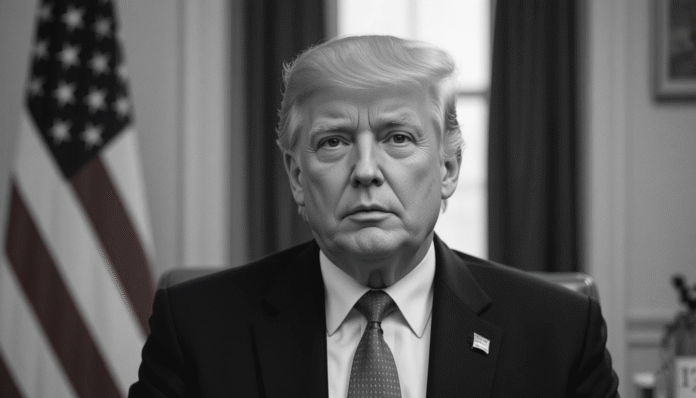The Israel-Palestine Conflict: Persistent Struggles Amid Political Maneuvering
The Israel-Palestine conflict remains a deeply rooted and multifaceted struggle, particularly exacerbated during the tenure of President Trump. The recent escalations in Gaza have underscored the challenges of achieving lasting peace and have drawn international scrutiny. Despite widespread calls for a ceasefire and diplomatic negotiations, the violence did not abate, illustrating the limitations of global pressure on entrenched conflicts.
Central to Trump’s approach to the Israel-Palestine situation was his relationship with Israeli Prime Minister Benjamin Netanyahu, whose influence swayed important U.S. foreign policy decisions. Reports indicate that while military advisers advocated for restraint and a cessation of hostilities, Trump’s support for Israel’s military actions suggested a prioritization of political allegiance over humanitarian considerations. This dynamic has raised ethical questions concerning the United States’ role as a peacemaker in the region.
A pivotal moment during this period was the U.S. veto of a United Nations resolution condemning Israel’s military actions in Gaza. This decision reflected a broader pattern of U.S. support for Israel’s policies, often at the expense of Palestinian rights. The implications of such actions are multifaceted, as they effectively embolden further Israeli military engagement while sidelining critical dialogue regarding Palestinian statehood and sovereignty.
Furthermore, the expansion of Israeli settlements in the West Bank has continued unabated, bolstering tensions and further complicating prospects for a two-state solution. The increased settlement activity and the accompanying violence against Palestinians have fostered a sense of despair among the populace, perpetuating cycles of resentment and hostility. As conditions deteriorate, the feasibility of negotiating a fair and lasting resolution appears increasingly distant.
The Ongoing War in Ukraine: A Stalemate of Power Dynamics
The conflict in Ukraine, now in its protracted phase, has showcased a complex interplay of military strategies and political maneuvers that underscores the evolving dynamics of power. The war, which initially ignited in 2014 with Russia’s annexation of Crimea, has been characterized by a continuation of hostilities that have created a stalemate. Russian President Vladimir Putin appears increasingly comfortable with this impasse, seeing it as a means to project power without incurring the costs of a full-scale invasion. This comfort is bolstered by a series of military tactics, notably the extensive use of drone warfare. Drones have provided the Russian military with both operational flexibility and an advantage in monitoring Ukrainian movements, complicating the conflict further and confounding attempts at resolution.
The response of former U.S. President Donald Trump has been a subject of scrutiny. Although he occasionally threatened to implement increased sanctions against Russia, his administration’s broader strategy appeared hesitant, prompting questions about the level of his commitment to confronting Putin directly. Trump’s ambiguous stance on NATO’s collective security principles has also raised alarms, with a perception that European allies were left uncertain regarding the United States’ willingness to lead on this critical issue. This uncertainty has, in turn, fostered a climate of indecision among European nations, many of whom have relied heavily on U.S. leadership in navigating the crisis.
The implications of this ongoing stalemate for both regional and global security cannot be overstated. A continued conflict not only threatens the sovereignty of Ukraine but also underscores broader geopolitical tensions between NATO and Russia. As Europe grapples with its strategic dependencies, the stagnant nature of the Ukrainian war continues to shape international relations, impacting alliances, military readiness, and diplomatic efforts worldwide.
Additional Global Crises: A Landscape of Humanitarian Catastrophes
During Donald Trump’s presidency, a variety of global crises emerged, each characterized by significant humanitarian challenges and political instability. The civil war in Sudan has resulted in severe displacement and suffering. Fighting that erupted in 2019 and intensified has left millions in urgent need of assistance, with both government forces and rebel groups committing human rights violations. This situation has not only exacerbated living conditions for civilians but has also led to regional instability, impacting neighboring countries.
In Afghanistan, the Taliban’s resurgence following the U.S.’s withdrawal in 2021 paved the way for renewed authoritarian rule. The operating environment for civilians has drastically deteriorated, with restrictions on women’s rights and widespread violence against various ethnic groups. The uncertainty and insecurity have led to a humanitarian crisis, as families face famine, lack of medical care, and absent educational opportunities. The international community has grappled with how to engage with a regime that poses threats to global security while attempting to address the deteriorating humanitarian aspects.
Simultaneously, Myanmar has faced extreme turmoil following the military coup in February 2021. Large-scale protests met with violent crackdowns have resulted in thousands of deaths and widespread arrests. The situation for ethnic minorities, particularly the Rohingya, remains dire, as they are subjected to ongoing persecution and displacement. The humanitarian implications are profound, with significant segments of the population lacking access to food, shelter, or safety.
Haiti’s ongoing instability, marked by political corruption and gang violence, has compounded existing issues of poverty and insecurity. The assassination of President Jovenel Moïse in 2021 led to a power vacuum that gangs exploited, further jeopardizing civilian safety and humanitarian aid initiatives. In South America, countries like Venezuela grapple with significant economic turmoil, resulting in mass migration and a refugee crisis that affects neighboring nations.
Collectively, these crises illustrate how multiple regions have been embroiled in conflict and instability, resulting in widespread humanitarian disparities. The interconnectedness of these global issues underscores the complexity of improving diplomatic relations and extending aid amidst the increasing challenges presented during Trump’s administration.
Shifts in Geopolitical Power: The Rise of Global Competitors
During Donald Trump’s presidency, a profound shift in geopolitical power was evident, particularly marked by the rise of global competitors such as the BRICS bloc and the Shanghai Cooperation Organization (SCO). Emerging economies like Brazil, Russia, India, China, and South Africa, collectively known as BRICS, began to assert a more significant role on the international stage, showcasing an alternative to Western-led initiatives. This shift has been driven in part by the current geopolitical landscape, which includes the aggressive tariff policies implemented by the Trump administration.
One notable aspect of Trump’s trade policies was the imposition of tariffs on several nations, particularly India, which has led to increased economic tensions. The retaliatory measures taken by affected countries have further exacerbated existing rivalries. Consequently, nations that once aligned closely with the West have started to forge stronger ties with Asia, particularly within the constraints of the Eurasian sphere. The SCO, which comprises several of these rising powers, has become pivotal in promoting economic collaboration and security cooperation. This organization not only serves as a counterbalance to Western influence but also reflects a broader shift in alliances.
As a result of these developments, there are growing concerns regarding Western dominance in the global arena. The perceived decline in U.S. influence can contribute to a multipolar world, where power dynamics are increasingly dictated by non-Western players. This evolution poses significant implications for international relations and global security, as emerging powers seek to redefine rules of engagement that were previously dominated by states like the United States. The transition towards a more fragmented global order requires a reassessment of strategies and policies related to diplomacy, economic partnerships, and security frameworks.


